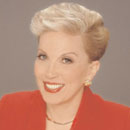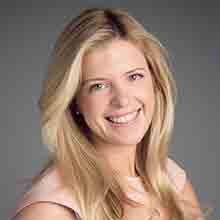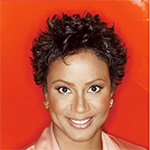C-Force: When Artificial Dyes in Food Becomes a Red Flag
"Red is a powerful color," a report by the folks at Scientific American proclaims, "the color of love and of hate. ... Some of the hue's significance has a biological basis. Many humans get red in the face from increased blood flow when they are angry. A similar process activates a flush of embarrassment." The sight of red can also trigger a behavior: Sometimes the color sends "signals that may not really reflect an entity's true nature."
The fact that the color red is so darn compelling is certainly not lost on the processed foods industry. As recently reported by U.S. News health reporter Claire Wolters, according to the U.S. Department of Agriculture's Branded Foods Database, "more than 36,000 American food products contain red 40, and more than 8,000 foods sold in the U.S. contain red 3." These two types of synthetic red food dye have long been suspected to be harmful to health and have been under "extra scrutiny in recent years," writes Wolters. "Since 1990, red dye 3 has been banned from use in cosmetics and topical drugs -- however, not for food use."
So we should be relieved to learn that the Food and Drug Administration is now officially banning Red 3 from all foods. According to the U.S. News report, manufacturers using Red 3 in food and ingested drugs "have until January 15, 2027, and January 18, 2028, respectively, to reformulate their products." That's right: The ban takes effect two or three years from now.
Also under "recent scrutiny" has been Red 40. But you've got to wonder just what that means when it comes to consumer protection. "Red dye 3, also labeled Red No. 3 or FD&C Red 3, is a synthetic color additive made from petroleum," explains Wolters. Its consumption has been suspected to "increase risks for bladder cancer and ADHD." Maybe seeing the writing on the wall before the dye's ban, "some food companies have already replaced red dye 3 with red dye 40."
Which leads us to the question: Should we not have similar concerns about Red 40?
"Like most food dyes, Red 40 was originally synthesized from coal tar and is now made from petroleum," writes Wolters. "It's made up of chemical bonds that can be toxic when heated to decomposition, a process in which chemicals can change form. Some studies have also revealed that Red 40 also contains carcinogens like p-credine, which is linked to cancers in animals, and benzidine, which the National Cancer Institute links to bladder cancer."
If you are now inclined to avoid this ingredient, you are advised to start by closely checking the list of the ingredients of the products you may be considering for purchase. "Dyes tend to be listed toward the end," Wolters reminds us. "Red dye 40 may be listed as a couple of names, including Red 40, Allura Red, Red 40 Lake, INS No. 129 and E129. ... Not all products that contain red dye 40 are red in color, but those that are tend to have a vibrant hue -- bright enough to leave a stain on your tongue or lips after you eat it."
As reported by Wolters, Dr. Jennifer Linehan, a urologic oncologist, explains that "when your body breaks down the dye, it releases more than just the color. It releases those carcinogenic ingredients, like benzidine."
"One of the things that makes red dye 40 so nefarious is benzidine," Wolters adds.
"With synthetic food coloring, if it has a benzidine product in any variation, it is carcinogenic," says Linehan. "What's difficult for us as medical professionals to assess is how much of that exposure do you need? How much do you have to take for it to have an effect?"
At present, "benzidine levels in red dye 40 are low enough for the FDA to consider the product safe to keep on the market," Wolters writes. "While the extent of red dye 40's health risks are uncertain, there's no immediate harm in cutting out artificial food dye from your diet, as long as you aren't cutting out major food groups with it." Wolters recommends steering clear of products that list red dye or other artificial dyes and colorings in their ingredients. If you want to add a touch of red to your diet, consider natural ingredients like "beet juice, cranberry juice, cherries, red cabbage or another potent red fruit to color your food."
And when thinking of food choices, let us not forget about "superfoods."
"Superfoods are nutrient-dense foods that are packed with a wide range of essential vitamins, minerals, antioxidants, and other beneficial compounds that are highly beneficial for health," according to Journal of Nutrition. "These foods are often considered to have extraordinary nutritional properties that can help boost the immune system, enhance energy levels, improve cognitive function, and support overall health and longevity.
"When it comes to superfoods, variety is key. ... Some commonly recognized superfoods include berries such as blueberries, strawberries, and goji berries, leafy green vegetables like kale and spinach, nuts and seeds such as almonds and chia seeds, fatty fish like salmon and mackerel, and certain grains like quinoa and oats. These foods are packed with essential nutrients such as vitamins, minerals, fiber, and healthy fats, making them a great addition to any diet. ... By diversifying your food choices and incorporating superfoods, you can enhance the nutritional value of your meals and take a step towards a healthier lifestyle."
=========
Follow Chuck Norris through his official social media sites, on Twitter @chucknorris and Facebook's "Official Chuck Norris Page." He blogs at http://chucknorrisnews.blogspot.com. To find out more about Chuck Norris and read features by other Creators Syndicate writers and cartoonists, visit the Creators Syndicate webpage at www.creators.com.
Copyright 2025 Creators Syndicate, Inc.























Comments